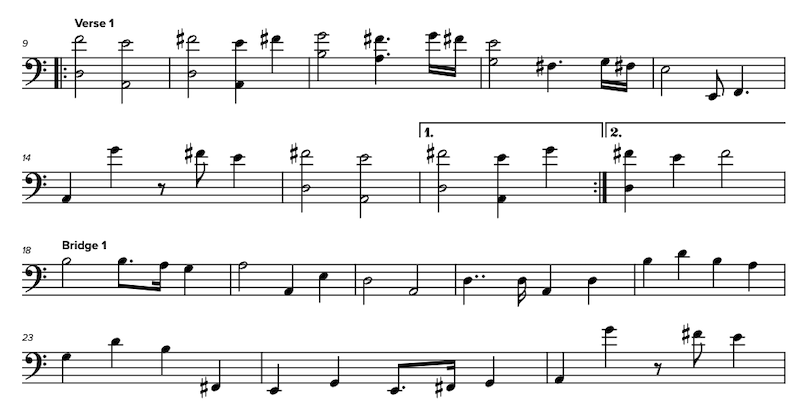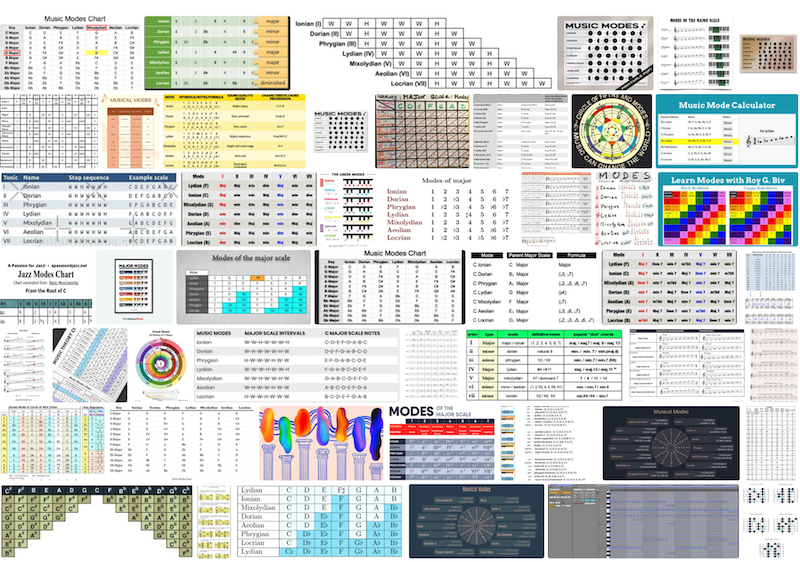Looking for the heart of (Looking for) The Heart of Saturday Night
Ah yes, there I am, a jazz troubadour slinging back bad whiskey in my old automobile. Cruising the rainy streets looking for the next speakeasy, my best gal by my side. That’s what I channel in to playing The Heart of Saturday Night. Ahem.
I’ve been learning this as a part of a newly founded ‘Song Club’
Rules of Song Club1:
- Do not talk about song club. Or do, up to you really. Chill out, man.
- A song is nominated once per month.
- Everyone in the group learns this song over the course of the month.
- People can learn the song in whatever way they please. Bass? Groove away. Singing? Shine on. Change key? Class, have at it.
- People share links, thoughts, tutorials, on how to play the song.
- People can share recordings of themselves but no pressure to either.
- No self-criticism or self-deprecating of your own work.
In the first iteration of this song club I chose the Tom Waits song (Looking for) The Heart of Saturday Night2.
Here’s the reasons I chose it:
- It’s not too complicated. There’s only two parts to the song and achievable chords at a steady speed.
- It’s well known. There’s quite a few YouTube tutorials on how to play it on guitar, although a lot of them smooth off the rough edges of Tom Waits singing.
- I love it.3
- It has a lovely bassline.
My tutor has been helping me to transcribe, practice and dissect the bass for this. First and most obvious, it’s clearly a double bass there. His second point is that it’s a counter melody. Which I somewhat get, it compliments but doesn’t follow the main melody but still plays in the same key. It also moves around the fretboard a lot without being intrusive or obvious. You’ll hear there’s a low-E after ‘barellin’ down the boulevard’. And then jumps way up to a high-G just before it goes back in to the verse.
How do you know where bar 5 and 6 are? Well, this lovely bassline has been lovingly transcribed by yours truly using the lovely Soundslice platform. Th’on tutor helped me with the verse but, by God, I managed to actually transcribe the bridge part all by myself. What a buzz! I learned an actual skill and applied it to a thing!
Here’s the verse and the bridge. There are eight bars in that bridge and I think it took me….ohh about three hours to do transcribe it. It even went as extreme as just having one bar, about two seconds in the song, on repeat in Soundslice for about ten minutes at a time, as I went slightly mad.

I was given the task then of coming up with a new bassline for this song that keeps within the same chords and key. It also was a task that involved learning about modes in music.
Modes are a bit of headwreck, useful, and I don’t entirely understand them yet. Basically, there’s 7 notes in a key – do, re, mi, fa, so, la, ti. For any key, D major in the case of this song, each of these obviously corresponds to a note, and to stay in the key while playing, you can use the mode. The ‘re’, second note, of D major is E minor. Then we go and consult our little mode table of hell and because we’ve been good students and (as if!) studied our modes and scales all week, we know how to play E minor up and down the entire fretboard.
Anyway, there’s no point in me explaining it because it’s been done by other people much better than I could.
BUT the modes for this song, and what I should work within as I come up with a new bassline, are stated in a the message I sent to my tutor in a moment of panic.

Taking the modes within D major, the modes in bold below are the ones within this song.
- D – Ionian
- E – Dorian
- F# – Phrygian
- G – Lydian
- A – Mixolydian
- B – Aeolian
- C# – Locrian
If you’re thinking, wow, I think I’d go slightly mad learning all these. Then yes, you are correct. Just image search for ‘music modes chart’ and see the hell you walk in to.

Real sniper on a clock tower type search history there.
Because of these rules, and all the modes and keys running through my head, creating the bassline started to feel like an intellectual exercise. Almost like some form of musical sudoku and only the right number fits in to that particular slot.
But that’s not what music is about either. It’s about the feel, the tone, the vibe. As it goes, people don’t remember what you said, they remember how you made them feel. And so, it’s obviously about getting those chords right and exploring the notes inside those chords, but the beat, timing and tone of the notes are where it comes together.
So what is the feeling of this song? As joked in the first paragraph, yeah there’s Tom Wait’s beatnik persona, which seems a bit corny now and I guess was a throwback to 20 years before. But the lyrics have a poignancy to them that are worth thinking about. Maybe it’s something we all know, especially in our 20’s (Tom’s 24 here!) of being amped up for some big night out and you keep looking for the excitement, the next thing, that’s just out of reach and maybe it does arrive but there is a sense that it has to be got at, it has to be found, grabbed, possessed on this night out. An excited desperation about the potential of it all. And some of the beauty in the moments as you chase that.
These are my favourite lines4:
Tell me, is it the crack of the pool balls, neon buzzing
Telephone's ringing, it's your second cousin
How do I, a bass player, bring together the head and the theory of the modes along with the heart of the song and the mood it’s supposed to evoke?
I don’t know.
And that’s fine. That’s something to think about now and try out as I attempt to craft my own bassline for this. But it’s important to remember both when composing.
And maybe all the scales, the theory, the numbers and structures all are simply tools to help you express the core essence of the song and yourself.
The incomparable James Jamerson gets at this in a 1979 interview:
“Bass players call from all over, wanting to know what type of equipment I use, what type of bass, what kind of strings-- things like that. I'll tell them, but that's not what's important; it's the feel. The strings don't make the sound, it's the feel. It's all in here, in the heart."
Now, he was one of the greatest players of all time. He was so talented he didn’t need to think much with his head. But regular schlubs like myself, it’s the practice, practice, practice, that gives us the clear path to the heart.
These are the rules at the moment, they will hopefully evolve, I’d like to post a better version at a later point.↩
Interestingly, to no one but me who has to type this, the song is called (Looking for) The Heart of Saturday Night but the album is just called The Heart of Saturday Night.↩
I remember in Brussels we had this game with Spotify while drinking before heading out. You would pick a theme of some kind, could be anything – city names, food items, colours. Then each person in the room would queue up one song whose title that fit under that theme. So you’d be drinking and chatting and get this collective, participatory DJing. Genius really, now I think about it. Anyway, one time playing it ‘days of the week’ came up as a theme. People picked things like Ruby Tuesday, Seven Drunken Nights, I Don’t Like Mondays (feel free to imagine some more). I queued up, you’ve guessed it, (Looking for) The Heart of Saturday Night. And the moment it came on a there was a real satisfaction, beery smiles, and “great choice!” from people in the room. And here I am, 10 years later, smugly proud about picking it.↩
This verse is a clear-cut example of why ‘show don’t tell’ can be good direction for fiction writers. These two lines bring me in to that bar, and what I would feel. The last line in the verse – ‘Magic of the melancholy tear in your eye’ – just seems much too obvious. This lyrical obviousness totally works though in some songs with some singers, particularly soul music, but not this song.↩